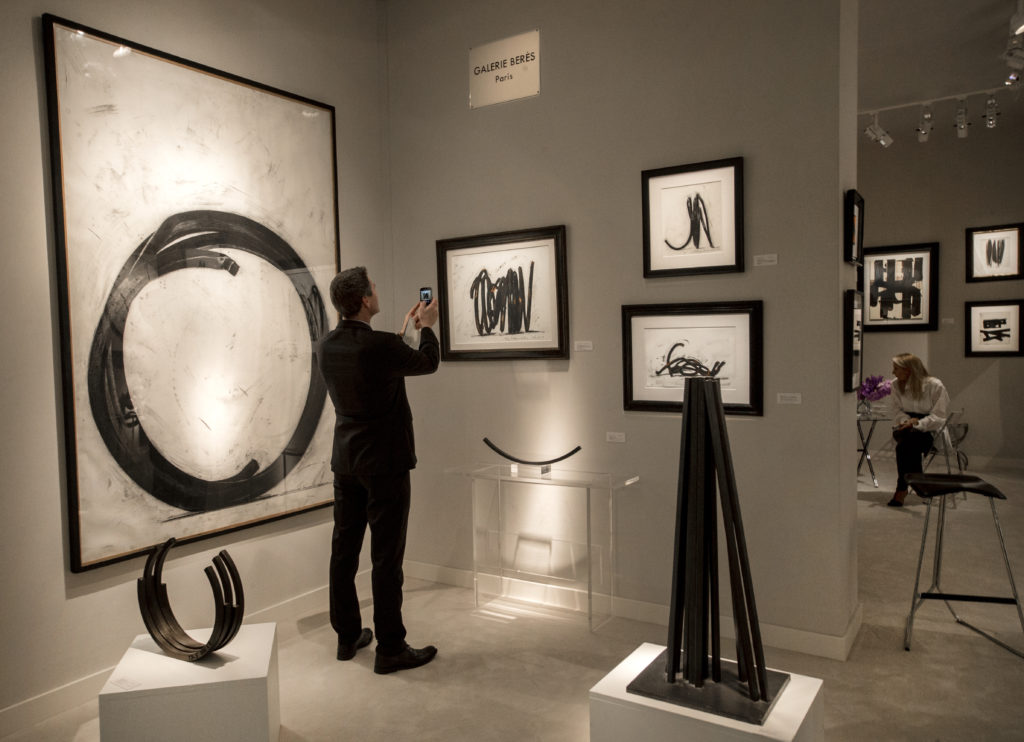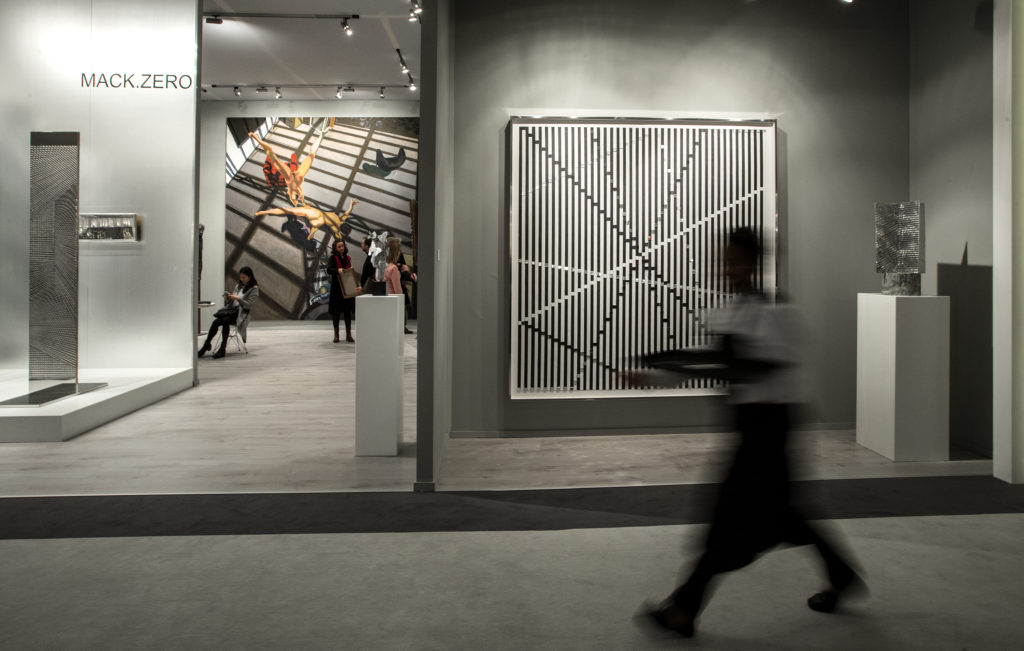The Online Art Market – An Analysis
An article based on TEFAF Art Market Report 2016
by Miguel Bermudez

Maastricht 11 maart 2016
TEFAF 2016 – 406 Beres Photo: Harry Heuts
As technology has advanced and e-commerce has become an everyday part of nearly all retail industries, interest in buying art online has escalated, and dealers, auction houses and other agents have met this demand through different business models and access points – as reported by the TEFAF art market report.
To understand the impact of the online business model, one needs to view the size of the total market. In 2005 the estimated value of art sales worldwide was $35.9 billion comprised of 28.2 million transactions. In 2015 sales nearly doubled to $63.756 billion, with the number of transactions growing to 38.1 million. The change in value from 2005-2015 was 77.6% and volume increased by 35.2% (reported by Arts Economics).

Maastricht 13 maart 2016
TEFAF 2016 – 525 Beck and Eggeling Photo: Harry Heuts
The United States has been the largest market for art by value for the last 20 years; with a share of 43% of the global market and the three largest players by geography are the U.S. (43%) the U.K. (21%) and China with 19%.
The market in 2015 was comprised of the following sales channels:
Auction Sales accounted for 47% of the art market (dominated by Christie’s and Sotheby’s with 42% of the entire category).
Dealers Sales – including galleries, dealers and private sales- accounting for 53% of total sales (dominated by small enterprises with annual sales of less than $1 million and accounting for 56% of this category).
Online sales were estimated at 7% of global art and antiques or $4.7 billion. For Dealers, online sales were also 7% of their sales. The top tier auction houses-Christie’s and Sotheby’s saw online sales average less than 1%.
The challenge presented to the online business model becomes clear when we realize that the vast majority of transactions were for lesser value items. Almost 97% of the sales generated online were for less than $50,000. Online art sales consist of thousands of transactions through dealers that are dispersed geographically. These dealers estimate that their largest share of sales will continue to be generated through direct gallery visits.
Online sales for Dealers were generated by:
New buyers in 53% of the cases, and increase of 6% over the previous year.
Regular buyers that have never physically visited the gallery represent 9% of dealer on-line volume (+7% vs. previous year).
Regular buyers that visit the gallery represent 29% of online sales (-9% vs. previous year).

Maastricht 10 maart 2016
TEFAF 2016 – Preview sfeer Photo: Harry Heuts
These numbers show the importance of an online presence to attract new buyers. The largest challenge facing dealers is attracting new buyers as 73% of the dealers reported in a survey conducted by Art Economics.
The low percentage of sales generated online for most dealers makes the attraction of new buyers through the Internet a painfully slow process. The consensus by dealers is a hope that continually attracting visitors to their galleries will result in organic growth of their on-line sales.
At the moment most online sales are being channeled through 3p platforms or auction consolidators. They have enabled access to online selling for a myriad of smaller auction houses as well as for the dealer sector. The most successful platforms for auction houses are Invaluable, iGavel and ATG’s the saleroom.com and for dealers, Artsy, 1stdibs.com dominate. Many online art retailers have also entered the market such as Auctionata and Paddle 8, and they are experiencing very rapid growth.
For the most part, the majority of online players are replicating the off-line process with new online demand complimenting traditional offline channels.

